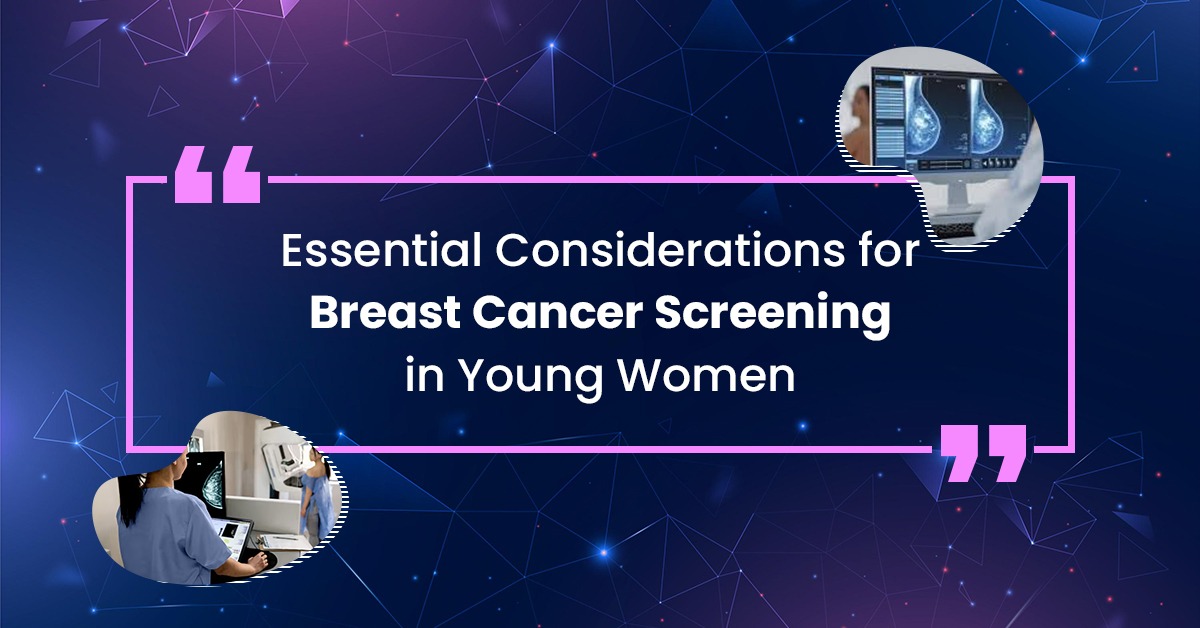Introduction
Breast cancer remains a leading cause of cancer-related mortality among women globally. While routine breast cancer screening is generally recommended for women over 40, there is growing evidence that considerations are needed for screening women under 40. Recent research presented at the American Roentgen Ray Society (ARRS) annual meeting highlights the importance of tailored screening approaches for younger women. This blog explores these considerations, the benefits, risks, and best practices for breast cancer screening in women younger than 40.
The Importance of Early Detection
Early detection of breast cancer can lead to earlier treatment, which is often more effective and less invasive. However, screening young women for breast cancer poses unique challenges. Research by Dr. Manisha Bahl from Massachusetts General Hospital indicates that women aged 30 to 39 have a cancer detection rate of nearly three per 1,000 screenings, with about half of these being invasive. This underscores the need for careful consideration in screening protocols for younger women.
Understanding the Research
Dr. Bahl and her team conducted a retrospective study involving 4,150 women aged 30 to 39 who underwent 4,448 screening mammograms between 2007 and 2019. Their findings revealed several key points:
- Cancer Detection Rate: 2.9 per 1,000 exams
- Abnormal Interpretation Rate: 9.3%
- Positive Predictive Value: 3.1%
- Sensitivity: 81.3%
- Specificity: 91%
- False-Negative Rate: 0.7 per 1,000 exams
Of the 13 detected cancers, six were invasive ductal carcinomas, and seven were ductal carcinoma in situ. These were predominantly found in women aged 35 to 39, with many having documented risk factors.
Screening Methods for Young Women
The traditional mammography used for older women is not always effective for younger women due to dense breast tissue. Here are some screening methods that might be more appropriate:
1. Digital Breast Tomosynthesis (DBT)
DBT, included in screenings since 2013, offers more detailed imaging than traditional mammography and can improve cancer detection rates in younger women with dense breast tissue.
2. Breast MRI
Breast MRI is more sensitive than mammography and can be particularly useful for high-risk women, identifying cancers that mammography might miss.
3. Ultrasound
Ultrasound can complement mammography by distinguishing between solid masses and fluid-filled cysts, enhancing the accuracy of cancer detection.
Benefits of Screening Young Women
- Early Detection: Early-stage cancers are often more treatable and can lead to better outcomes.
- Increased Awareness: Regular screening promotes awareness and self-examination habits, aiding in early detection.
- Targeted Monitoring: High-risk women benefit from vigilant monitoring and early intervention strategies.
Risks and Limitations
- False Positives: Younger women are more likely to experience false positives, leading to unnecessary anxiety and further invasive testing.
- Radiation Exposure: Repeated exposure to radiation from mammograms can increase cancer risk over time, especially in younger women.
- Overdiagnosis: Screening might detect cancers that would not become life-threatening, leading to unnecessary treatment and associated side effects.
Personalized Screening Strategies
Given the complexities, a one-size-fits-all approach does not work for breast cancer screening in young women. Personalized screening strategies should consider individual risk factors and preferences. Recommendations might include:
- For High-Risk Women: Annual MRI and mammography starting earlier, possibly as early as 25-30.
- For Moderate-Risk Women: More frequent clinical breast exams and consideration of ultrasound or MRI based on breast density and personal risk factors.
- For Average-Risk Women: Encouraging self-examination and routine clinical exams, with mammography beginning at age 40 unless symptoms or changes occur.
Future Directions and Research
Dr. Bahl’s study highlights the need for more research to inform guidelines about the appropriateness and frequency of screening in younger women. Future studies should include pooled data from multiple institutions to understand tumor biology in younger women better. Addressing research gaps identified by the U.S. Preventive Services Task Force (USPSTF), such as screening strategies for women with dense breast tissue and higher breast cancer mortality rates among African American women, is also crucial.
Conclusion
Breast cancer screening for young women requires careful consideration of individual risk factors, the effectiveness of different screening methods, and the potential risks involved. Personalized screening strategies can help balance the benefits of early detection with the limitations and risks, ultimately improving outcomes for young women at risk of breast cancer. By staying informed and proactive, young women can take important steps toward early detection and better breast health.


